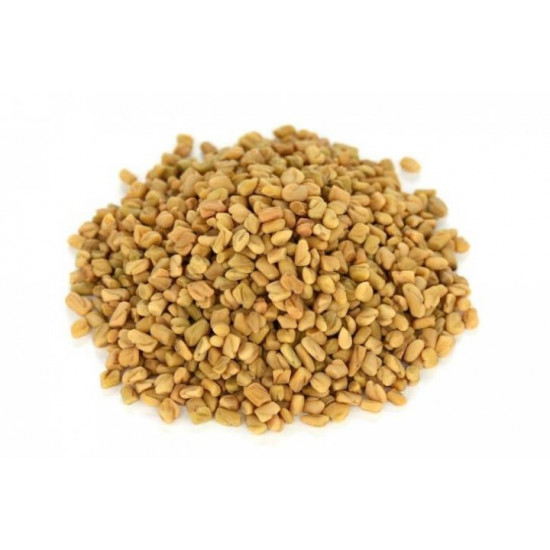
- Stock: In Stock
- Model: 263906281
0% Customers recommend this product
-
5 Awesome0%
-
4 Great0%
-
3 Average0%
-
2 Bad0%
-
1 Poor0%
Reviews Over Fenugreek grains Fenugreek Shambhala Helba Yellow tea 250g
- (0)
Total Reviews (0)
click here write review to add review for this product.
Report this review.
Description
<
Fenugreek: what is it and how to use it
Fenugreek - what kind of seasoning is it, what taste and properties does it have? This plant reaches a height of no more than one meter and blooms with small yellowish flowers that have a delicate nutty smell. The plant produces rectangular shaped seeds, which are also called fenugreek. They have a sweetish taste, reminiscent of mushrooms and nuts, with a slight bitterness. Fenugreek is the basis of such seasonings as hops-suneli and curry.
Shambhala, helba, chaman and fenugreek - what is it, and what do these names have to do with fenugreek? The most direct: all these are names of one plant, used in the languages of different peoples. However, India is considered its homeland, from which fenugreek first spread to other Asian countries, and then came to Europe. Today this plant is grown everywhere and used for culinary and medicinal purposes.
Varieties and types
In total, there are approximately 130 varieties of fenugreek and the two most famous are:
Greek or hay. This type of fenugreek is cultivated everywhere (Caucasus, Turkey, Eastern Europe, Egypt, Ethiopia, Iran). It is used for medicinal purposes; it is part of many spicy mixtures and medicinal teas.
Blue. It is grown in the Mediterranean and other regions of Europe. They use not only the fruits, but also the leaves, adding them to the cheese. The seeds are part of spicy mixtures and are also used as an independent seasoning.
Both of these types have a similar taste and are used in almost the same way in cooking.
Fenugreek beneficial properties and contraindications
In addition to its unique taste, fenugreek has useful, even healing, properties. Most of the nutrients are concentrated in the seeds: tannins, flavonoids, fatty acids, vitamins A, C and B, calcium, iron, magnesium, sodium and phosphorus. Among the beneficial properties of fenugreek are the following:
stimulates digestion, soothes the mucous membranes of the gastrointestinal tract, improves intestinal motility
helps thin mucus and remove phlegm from the lungs when coughing
has an antipyretic effect action
tones and strengthens the immune system
helps relieve inflammation of soft tissues and heals wounds
helps hematopoiesis and strengthens blood vessels
increases the tone of the uterus, stimulates menstruation
stimulates the production of prolactin
improves the condition of skin and hair
Fenugreek has been used for medicinal purposes for more than a thousand years. And like any medicine, it also has contraindications. Fenugreek is contraindicated in pregnant women, as it increases the tone of the uterus and can cause premature birth and increase bleeding. For a patient with a thyroid gland, fenugreek can also be dangerous because it affects hormonal levels. Allergy sufferers should also be careful, and diabetics should definitely consult a doctor.
Yellow tea from Egypt
Fenugreek is also called yellow tea, although it has nothing to do with tea. However, it produces a golden-colored drink, which is especially appreciated in Egypt. Enterprising Egyptians sell their Egyptian yellow tea at exorbitant prices, forgetting to tell tourists that it is ordinary fenugreek. But where to buy fenugreek? You can buy fenugreek seeds in Ukraine, and they are of high quality.
How to brew yellow tea:
Rinse 2-3 teaspoons of seeds thoroughly
pour 1 cup of boiling water over the seeds
boil yellow tea for low heat for about 7 minutes
Add lemon, ginger, honey and milk to the finished tea.
Specifications
| Characteristics |
























































